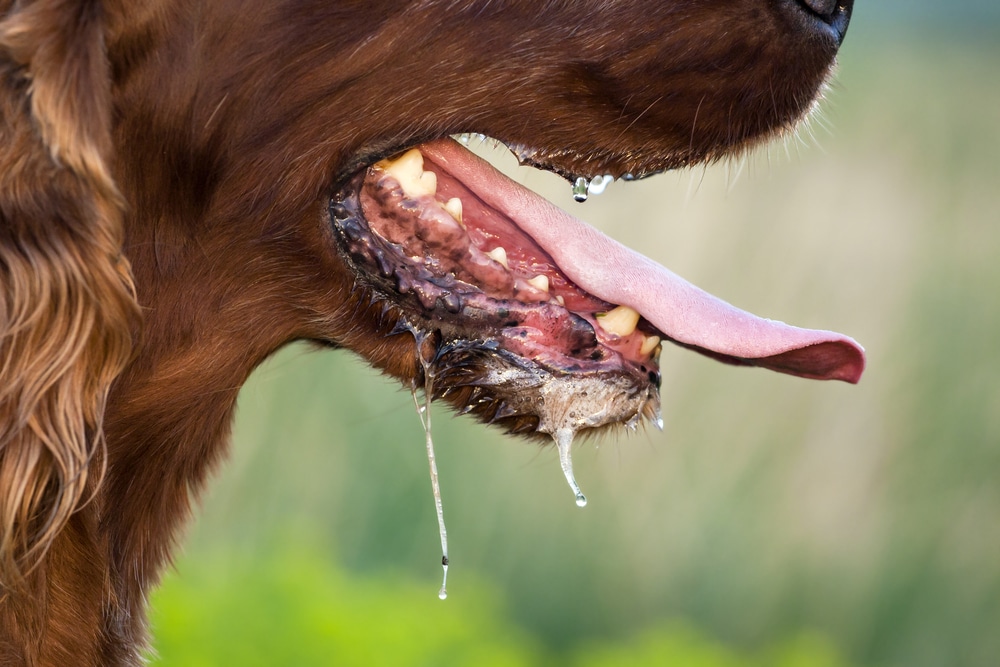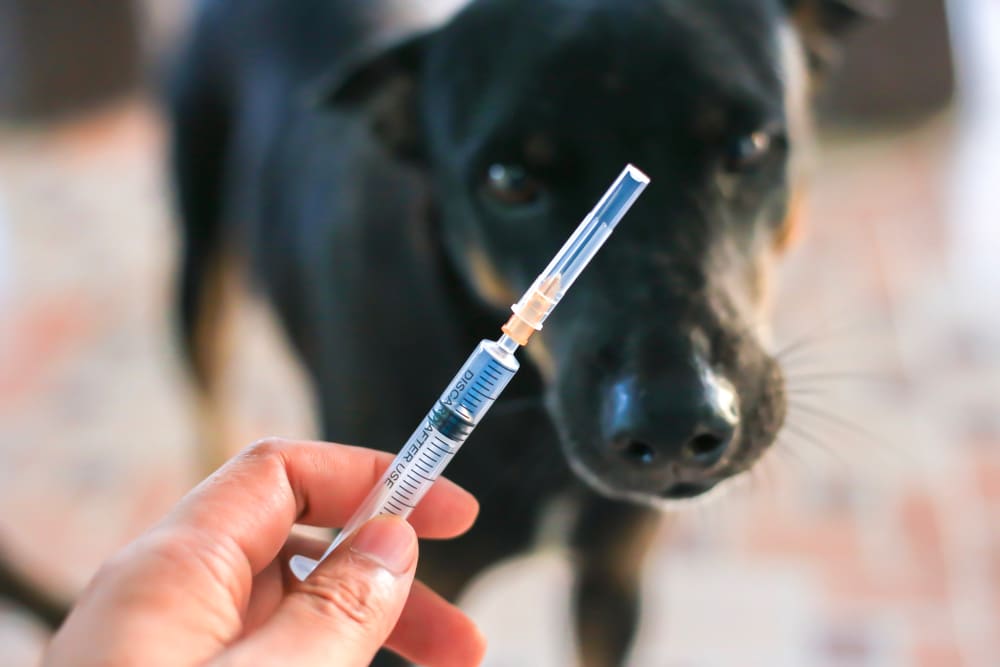Rabies is an insidious virus that permeates the brain and spinal cord, with no cure or treatment. All mammals, including humans and dogs, are vulnerable to this deadly disease. The only way to avoid its spread in your dog is prevention. But how do you prevent rabies in dogs?
Vaccination is the best way to prevent rabies in dogs and to protect yourself too. It can transfer from dogs to humans. Vaccinate your dog against rabies to prevent this fatal disease. Avoid contact between your dog and wild animals, stray dogs, or cats, and check for signs of infection. Also, visit your vet for regular check-ups.
Table of Contents
What Is Rabies, And How Does It Transmit?
Rabies is a viral infection caused by rabies lyssavirus. It can affect any mammal, including humans and dogs. This virus attacks the brain and spinal cord, causing severe neurological issues that eventually lead to death.
The rabies virus infiltrates the body and wreaks havoc on nerve cells, causing them to cease functioning properly. This particular strain of virus belongs to mononegavirales, a family of viruses marked by their single-stranded RNA genome.
Transmission
The rabies virus is transmitted through contact with the saliva, brain tissue, or other bodily fluids of an infected animal. This could be from a bite wound caused by cats, dogs, raccoons, bats, skunks, and foxes, all of which are possible carriers. The disease can even enter your body if you come in contact with their urine or feces! Ensure that direct exposure to any wild animals is avoided at all costs for you and your dog’s safety.
What Are The Symptoms Of Rabies In Dogs?

Symptoms of rabies in dogs can vary depending on the stage of the disease, but some common signs and symptoms to look out for include:
- Behavioral changes such as aggression
- Restlessness
- Excessive vocalization
- Loss of appetite
- Hydrophobia
- Paralysis
- Muscle weakness in the hind legs
- Difficulty walking or balance issues
- Drooling/foaming at the mouth
- Sensitivity to light and sound, seizures
- Disorientation or confusion
- Sudden changes in behavior, such as being overly friendly or excessively shy
If you suspect your dog may have rabies, it is important to see a veterinarian immediately so they can give the proper treatment.
Top Tips To Prevent Rabies In Your Dog
Although rabies is an incurable virus, it is highly preventable. Here are a few tips to ensure your pup is protected from this deadly disease.
Vaccinate Your Dog Against Rabies
To safeguard your dog from possible rabies infection, keeping its rabies vaccination up to date is the most important precautionary measure you can take. A vaccinated dog will be guarded if exposed to a rabid animal. So, it is essential for dog owners to stay informed about their pup’s vaccinations and maintain current records.
For vaccination, speak to your veterinarian. Some states have mandatory rabies vaccinations for all pets, so make sure you adhere to the laws of your area.
Avoid Contact With Wild And Stray Animals
One of the most effective methods for rabies prevention is to keep your dog away from wild or stray animals. This includes raccoons, skunks, foxes, and bats, all of which can carry the virus.
If you see any wild animals in your yard or neighborhood, make sure your dog does not approach them or engage in play. Doing this will reduce the risk of your pup coming into contact with a rabid animal and consequently contracting the disease.
Monitor For Signs Of Infection
It is important to be vigilant and check your dog for signs of infection regularly. If you notice any unusual behaviors or changes in your dog’s health, consult a veterinarian immediately.
Early detection and treatment are key when it comes to rabies prevention. So, make sure you stay informed about the common symptoms of this fatal disease.
Report Sick Or Dead Animals
If you see a sick or dead animal in your area, report it to the local authorities immediately. They will be able to investigate and find out that the animal was infected with rabies. This can help protect other animals, including your dog, from getting the virus as well.
It is also important to be aware of any changes in behavior amongst the local wildlife population, as this may indicate a possible outbreak of rabies in the area. If you are concerned, contact your local health department for further advice.
Spay Or Neuter Your Dog
Spaying or neutering your dog is not only beneficial for population control, but it can also help reduce the risk of rabies. This is because unaltered dogs are more likely to roam, increasing their chance of coming in contact with a rabid animal.
By spaying or neutering your dogs, you can significantly lower the likelihood of them coming in contact with a rabid animal and thus reduce their risk of contracting rabies.
Have Regular Vet Check-Ups To Monitor Health
Rabies prevention is not just about avoiding contact with wild animals but also monitoring your dog’s health and making sure they receive regular check-ups at the vet. This will help ensure any underlying illnesses or conditions are detected early on and treated appropriately.
It is important to pay attention to any changes in your dog’s behavior or health to identify any potential signs of rabies. Early detection and treatment are essential for the prevention of this fatal disease.
What To Do If Your Dog Is Suffering From Rabies
If your dog is suffering from rabies, it is essential to take the necessary precautions to protect yourself and those around you. These are:
- Do not attempt to treat your dog at home. Immediate veterinary care is required.
- You should also avoid contact with any animals or people who may have been exposed to the virus.
- Wear protective gloves when handling your dog, and make sure you wash your hands thoroughly afterward.
- Be aware of possible environmental sources, such as infected saliva or urine, that could contain the virus. These should be disposed of properly to reduce the risk of infection.
- Contact your local health department for further advice on rabies prevention and control measures in your area.
In Conclusion: How Do I Prevent Rabies in Dogs?
To protect your dog from rabies, regularly vaccinate them and keep them away from wild animals. Monitor for signs of infection and report any sick or dead animals in the area. Additionally, spay or neuter your dog and have regular check-ups at the vet to monitor its health. By following these measures, you can protect your beloved dog from this deadly virus.
So, what steps do you plan to take to prevent rabies in your dog? Let us know in the comments below.
